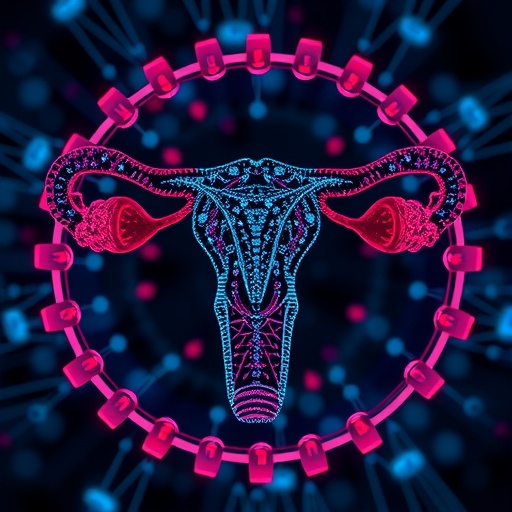In a groundbreaking study that merges the realms of reproductive health and artificial intelligence, researchers have sought to illuminate the complexities surrounding ovarian reserve assessment through advanced machine learning techniques. The research, spearheaded by a team led by Hiroshi Koike, highlights the vital necessity to accurately gauge both the qualitative and quantitative aspects of the ovarian reserve, which holds significant implications for women’s reproductive health. As the field of fertility medicine undergoes rapid evolution, the integration of technology and data-driven methodologies promises a future where personalized treatment options could become the norm rather than the exception.
The team’s research centers on two primary dimensions: quantitative and qualitative assessment of the ovarian reserve. Traditionally, medical professionals have relied on hormonal levels and imaging techniques to assess ovarian function. However, these measures often provide an incomplete picture, lacking the depth and precision necessary for tailored interventions. Koike and his colleagues aim to enrich this understanding by harnessing the predictive capabilities inherent in machine learning algorithms. By mining vast datasets, the researchers hope to uncover hidden patterns that can lead to more nuanced evaluations of ovarian health.
Artificial intelligence, particularly machine learning, serves as the backbone of this innovative approach. Unlike traditional statistical methods, machine learning algorithms can process large volumes of data, making determinations based on non-linear relationships and complex interactions that might elude human analysis. The researchers meticulously gathered demographic data, hormonal profiles, and ultrasound images from a diverse cohort of women. This multi-faceted dataset is critical for training the algorithms to make accurate predictions regarding ovarian reserve.
One of the key advantages of machine learning lies in its adaptability. Models can continuously improve as they are exposed to new data, a feature that could refine assessments of ovarian reserve over time. As more women seek fertility treatments or take proactive steps to manage their reproductive health, validated models could serve as essential tools for clinicians. The ability to predict outcomes with higher accuracy may shift the paradigm toward preventive measures, reducing the emotional and financial toll often associated with fertility challenges.
A particularly compelling aspect of the study involves the qualitative analysis of ovarian reserve, which includes examining the health and viability of oocytes. This dimension is crucial as it can profoundly affect fertility outcomes. Past methodologies did not adequately address how the quality of oocytes changes in relation to the ovarian reserve. By employing sophisticated machine learning techniques, the researchers aim not only to predict how many follicles will respond but also to assess their potential for successful fertilization.
Furthermore, the implications of this research extend beyond the laboratory. As fertility specialists begin to adopt these new assessment tools, the potential for personalized medicine becomes a reality. Women could receive data-driven insights tailored to their unique circumstances, guiding them through their reproductive choices with greater confidence. This bespoke approach may include recommendations on lifestyle modifications, timing for conception attempts, or interventions that could enhance fertility prospects.
Another exciting angle of the research is its potential application in clinical settings. If validated through rigorous testing, this machine learning-enabled model could become a routine part of reproductive health assessments. A more accurate understanding of ovarian reserve could lead to earlier interventions, potentially improving outcomes for women at risk of diminished ovarian function. Such proactive measures can significantly alter the landscape of reproductive health, challenging existing norms and reshaping patient care protocols.
The study also touches on ethical considerations surrounding the use of artificial intelligence in medicine. As algorithms begin to inform critical health decisions, questions arise regarding data privacy, informed consent, and the risk of bias in machine-driven recommendations. Koike and colleagues have proactively addressed these issues by emphasizing the importance of transparent algorithms and the need for continual oversight by medical professionals. Such vigilance is essential to maintain patient trust as we navigate the complexities of AI in healthcare.
Importantly, the research underlines the urgency of advancing our understanding of ovarian health amidst increasing infertility rates globally. Economic factors, lifestyle changes, and environmental influences are converging to create challenges for current and future generations of women. By investing in research such as this, the medical community can begin to formulate more effective strategies to tackle these pressing challenges. The incorporation of technology into reproductive health is not merely a trend; it’s a necessary evolution.
In conclusion, the study led by Koike et al. represents a significant leap forward in the quest to better understand ovarian reserve through machine learning. The interplay between artificial intelligence and reproductive medicine holds untold potential, promising a future where women can make informed reproductive choices based on precise data. As the findings of this research ripple through the healthcare landscape, we may witness a shift not only in clinical practice but also in the broader discourse surrounding women’s health, fertility, and the integration of technology in personal wellness.
This remarkable endeavor epitomizes the power of interdisciplinary collaboration, where cutting-edge technology and a commitment to women’s health converge. As researchers continue to refine their models and validate their findings, the medical community and the women they serve stand on the precipice of a new era, poised to embrace the possibilities that lie ahead. In the coming years, monitoring advancements in this field will be crucial, as the integration of machine learning into reproductive health could reshape the future of fertility medicine and empower women to take charge of their reproductive journeys.
Subject of Research: Assessment and prediction models for the ovarian reserve using machine learning.
Article Title: Assessment and prediction models for the quantitative and qualitative reserve of the ovary using machine learning.
Article References:
Koike, H., Harada, M., Yoshida, K. et al. Assessment and prediction models for the quantitative and qualitative reserve of the ovary using machine learning.
J Ovarian Res 18, 153 (2025). https://doi.org/10.1186/s13048-025-01732-0
Image Credits: AI Generated
DOI: 10.1186/s13048-025-01732-0
Keywords: ovarian reserve, machine learning, fertility, reproductive health, artificial intelligence.




